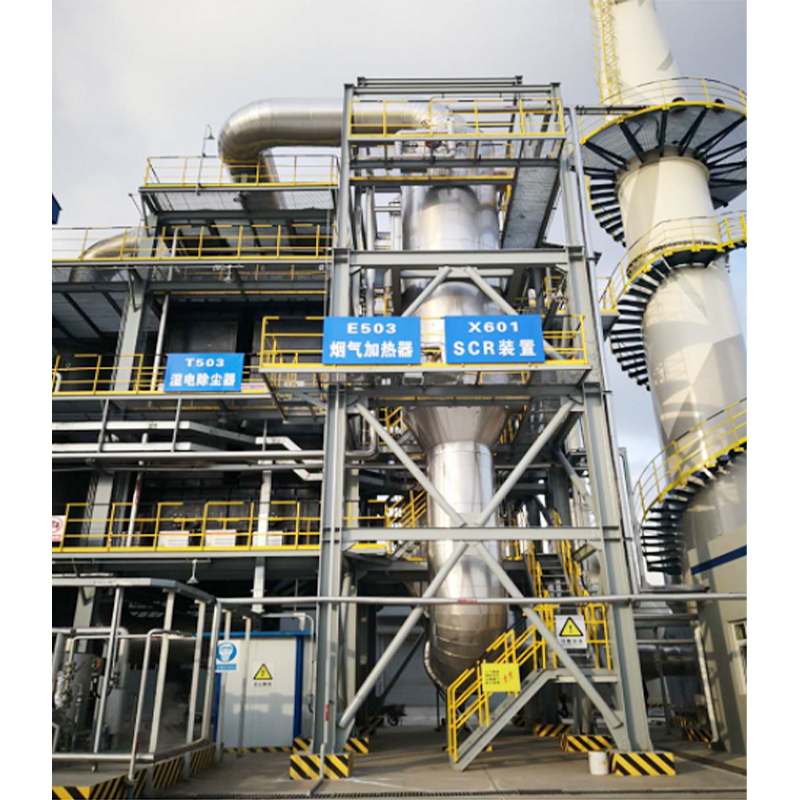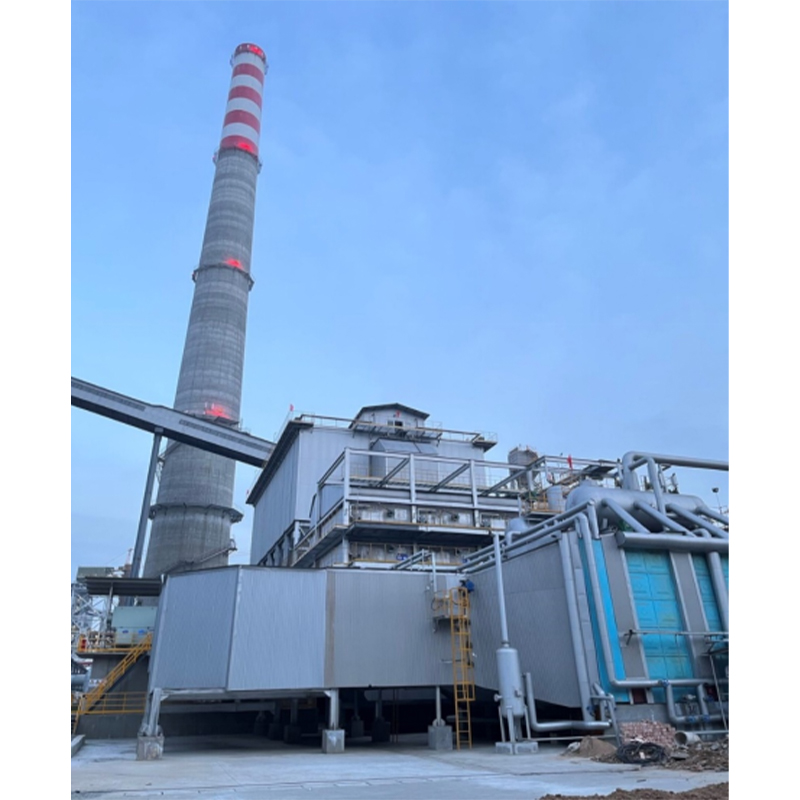Denitrification And Dust Removal Project
**Denitrification and dust removal project** is usually a technical solution for the treatment of industrial waste gas, mainly used to reduce the emission of nitrogen oxides (NOx) and particulate matter (PM) in the waste gas to meet environmental protection and emission standards. Denitrification and dust removal projects are widely used in flue gas treatment in thermal power generation, steel metallurgy, cement, chemical industry and other industries. The following are the application scenarios, uses, characteristics and advantages of this project.
### Application scenarios
- **Thermal power plant**: Flue gas from coal-fired and oil-fired power generation processes will produce a large amount of nitrogen oxides and particulate matter. Denitrification and dust removal projects can effectively reduce the emission of these pollutants.
- **Steel and metallurgical industry**: Waste gas generated in steel production usually contains high levels of nitrogen oxides and smoke. Denitrification and dust removal projects can help reduce the emission of these harmful substances.
- **Cement industry**: Cement kilns burn at high temperatures to produce waste gas containing nitrogen oxides and fine particulate matter, which requires denitrification and dust removal treatment.
- **Petrochemical**: There are also nitrogen oxides and particulate matter in the waste gas generated during the petroleum refining process. Denitrification and dust removal projects can effectively treat these waste gases.
- **Waste incineration plant**: The waste gas generated by waste incineration contains a variety of pollutants. Denitrification and dust removal projects can reduce the emission of nitrogen oxides and smoke, and reduce environmental pollution.
### Applications
- **Nitrogen oxide (NOx) removal**: Remove nitrogen oxides from exhaust gas through denitrification technology (such as selective catalytic reduction (SCR), selective non-catalytic reduction (SNCR), etc.) to reduce air pollution.
- **Particulate matter (PM) removal**: Remove particulate matter from exhaust gas through dust removal technology (such as electrostatic precipitator, bag filter, etc.) to reduce solid pollutants in the atmosphere.
- **Comply with environmental emission standards**: Help enterprises achieve emission compliance, meet the government's strict requirements on pollutant emissions, and avoid environmental fines.
- **Waste gas purification**: Effectively purify industrial waste gas, reduce the impact of harmful substances on the environment and human body, and protect air quality.
### Features
- **Comprehensive treatment**: Denitrification and dust removal projects usually combine multiple technical means, such as the combined use of denitrification technology and dust removal technology, to achieve comprehensive treatment of waste gas.
- **Strong adaptability**: According to different industrial waste gas components and emission requirements, the appropriate combination of denitrification and dust removal technologies can be selected, with strong flexibility and adaptability.
- **Advanced technology**: including advanced technologies such as SCR, SNCR, dry and wet dust removal, the best treatment solution can be selected according to the characteristics of the exhaust gas.
- **High efficiency**: with high denitrification and dust removal efficiency, it can significantly reduce the emission of harmful substances and meet the requirements of environmental protection standards.
- **Systematic design**: Denitrification and dust removal systems are usually designed as integrated systems, with automatic control and monitoring devices to ensure efficient operation.
### Advantages
- **Reduced pollutant emissions**: Through efficient denitrification and dust removal technology, the emission of nitrogen oxides and particulate matter can be greatly reduced, air pollution can be reduced, and environmental quality can be improved.
- **Compliance with environmental regulations**: Denitrification and dust removal projects help enterprises meet national or regional environmental emission standards and avoid penalties or closures due to excessive emissions.
- **Energy saving and consumption reduction**: Some denitrification and dust removal technologies can improve energy efficiency and reduce the operating costs of enterprises while reducing pollutants.
- **Reduced health risks**: Reducing the emission of harmful gases and particulate matter helps protect residents' health and reduce respiratory diseases caused by pollution.
- **Enhance the image of corporate social responsibility**: Implementing denitrification and dust removal projects can help improve the image of enterprises in the public and government, and demonstrate their social responsibility in environmental protection.
- **Technical scalability**: As environmental standards improve, denitrification and dust removal technology can be continuously upgraded to adapt to more stringent emission requirements and ensure long-term compliance operations.
### Summary
The denitrification and dust removal project is an exhaust gas treatment solution that integrates multiple technologies, mainly for the effective removal of nitrogen oxides and particulate matter generated in industrial production. It is widely used in thermal power generation, steel, cement, chemical and other industries, helping enterprises to achieve environmental compliance and reduce the harm of pollutants to the environment and human body. By implementing the denitrification and dust removal project, enterprises can not only improve their environmental protection level, but also improve their social responsibility image and meet the requirements of sustainable development.


